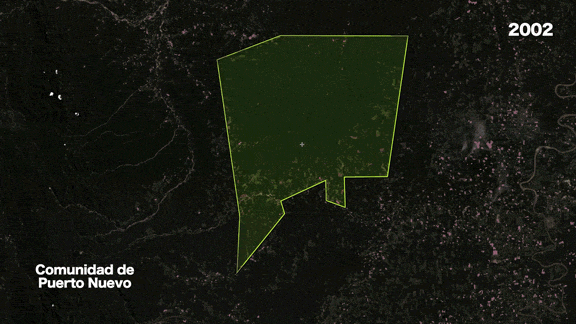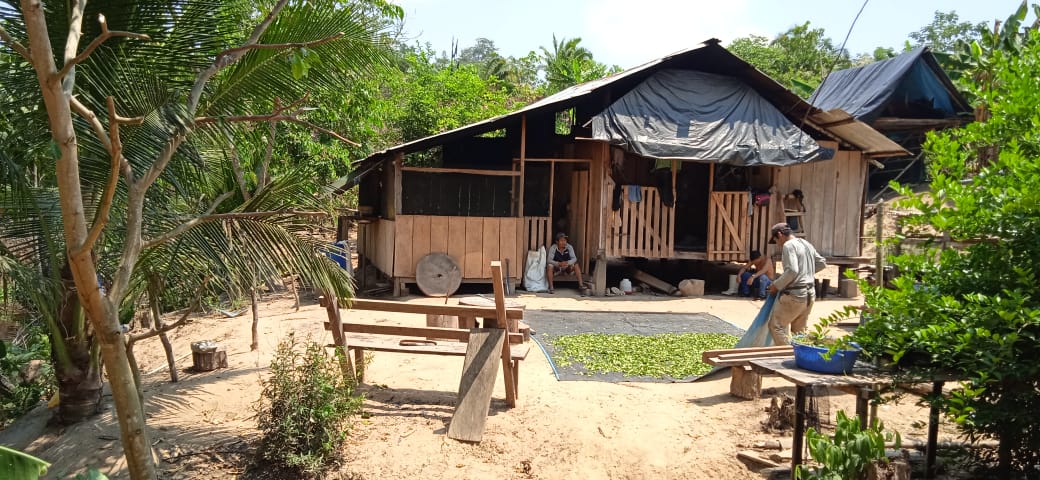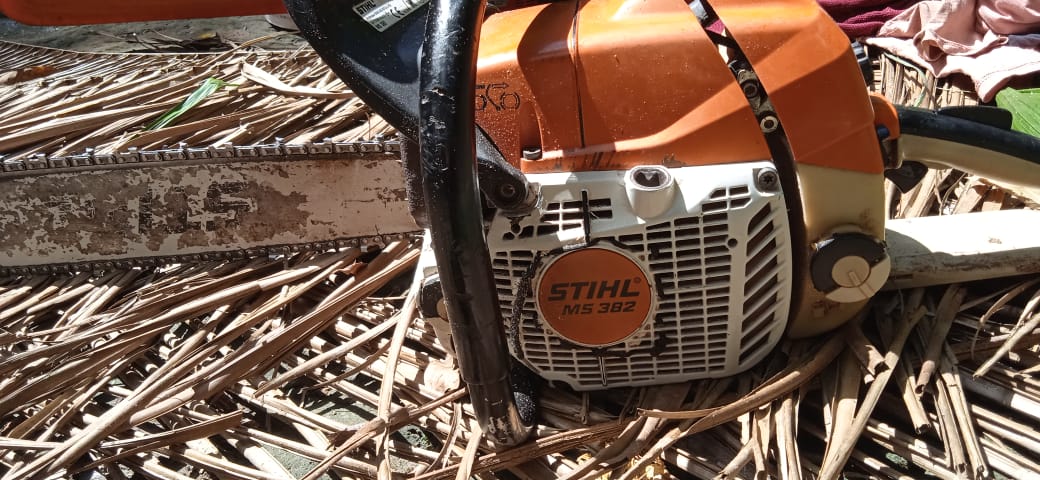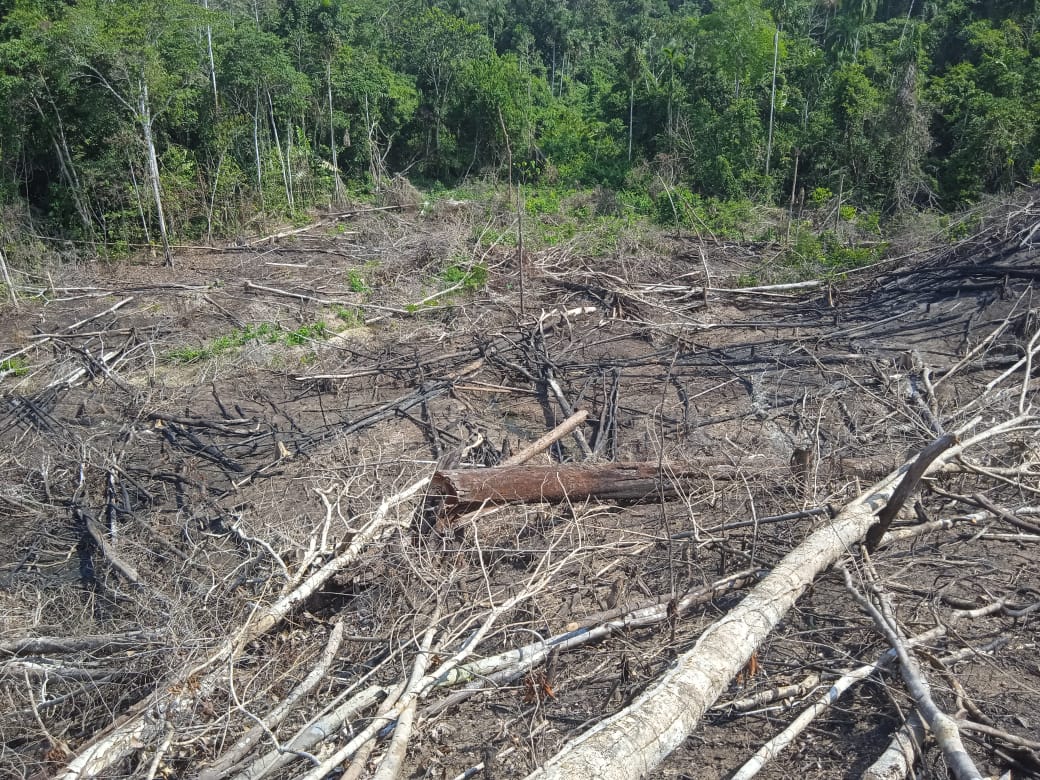- Between 2021 and 2021 the territory of the Indigenous Kakataibo community of Puerto Nuevo lost 15% of its tree cover.
- Satellite data suggest forest loss in the community territory may have accelerated in 2022.
- Residents say outsiders are invading the territory and clearing forest to grow coca crops for the production of cocaine.
- The presence of armed groups is deterring government intervention.
The territory belonging the Indigenous Kakataibo community of Puerto Nuevo comprises some 680 square kilometers (263 square miles) of rainforest between the regions of Huánuco and Ucayali in central Peru. Or, more accurately, it once did. Satellite data from Global Forest Watch show the territory was relatively unscathed until 2013 when deforestation surged; by 2021 the territory had lost nearly 15% of its tree cover.
Global Forest Watch data and imagery suggest forest loss in the territory may have accelerated further in 2022, and local and regional authorities have uncovered many new incursions into Indigenous land.

“We found them cutting down trees with a chainsaw,” said the leader of a Puerto Nuevo patrol group who wished to remain anonymous for safety concerns. “They were hardly an hour and a half away [from the community], and we confiscated their machinery, like five chainsaws, fuel and a motorcycle that they had at that time.”
The leader said the patrol group visited the site in early September after being tipped off by Peruvian environmental organization Association for Research and Integrated Development (AIDER). In addition to active deforestation, the leader said the group also uncovered residential structures and illegal fields of coca, a shrub used in the production of cocaine.


Puerto Nuevo was among the 10 most deforested community territories in all of Peru between 2000 and 2015, according to a study conducted by the Common Good Institute (known by its Spanish acronym IBC). Other Kakataibo communities, such as Santa Martha and Unipacuyacu, have also reported deforestation within their territories.
Puerto Nuevo president Elías Mosoline said dealing with these incursions is increasingly difficult for his community.
“More than four, six, eight years ago, they were invading, in succession, and the government does not guarantee any support for us,” Mosoline said. “We want this to end so that [we can] live in tranquility and in harmony. We live in fear and we cannot go to our farms.”

“Drug trafficking is advancing more every day,” said Herlin Odicio, president of the Native Federation of Kakataibo Communities (Fenacoka). “The plants that are there are coca; they are not other crops.”
Odicio said he presented the plight of the Puerto Nuevo community to the Regional Roundtable of Ucayali, an association of civil society and state representatives that seeks to aid environmental defenders and Indigenous communities in the Ucayali and Huánuco regions.
“The only thing left for us is to consolidate the work with other communities to search for strategies to combat the advancement of drug trafficking,” Odicio said.
Prosecutor Vladimir Rojas, who works with the Specialized Environmental Prosecutor’s Office of Ucayali, said the Puerto Nuevo situation is complicated.
“This is not just about cutting down trees,” Rojas said, adding that in 2019 he coordinated with the prosecutor’s office and the anti-drug police to conduct an intervention in Puerto Nuevo.
But the intervention never materialized.
“The police reported that there was a presence of armed groups, so the operation needed to be directed in another way,” Rojas said. He said weather conditions also precluded the use of a helicopter.
“That was before the pandemic,” Rojas said.

Luis Hallazi, an advocacy consultant who works with IBC and specializes in Indigenous territories, said the incursions happening in Puerto Nuevo and other communities in the Huánuco province of Puerto Inca bled into Indigenous land from communities recently established near the territory. He said the establishment of these communities was legal, having been authorized by the provincial municipality of Puerto Inca and the regional government.
“Clearly, in the Amazon, this situation of the indiscriminate creation of population centers and hamlets is a danger because those are the places where the invaders end up gathering and organizing themselves,” Hallazi said.
Jorge Mendoza, director of the Ombudsman’s Office of the community of Tingo María, said that “political instability” in regional governments further complicates issues faced by the region’s Indigenous communities, particularly when it comes to the process of land titling.
“By ‘political instability’ I am referring to the constant change of governors, regional directors and managers, and officials,” Mendoza said. “Many times, we find people who are not prepared for the issues that they must tend to.”
This is a translated and adapted version of a story that was first reported by Mongabay’s Latam team and published here on our Latam site on October 6, 2022.
Banner image: Satellite imagery from Planet Labs Inc. captured October 2022 shows several recently cleared areas in the territory of the Indigenous community of Puerto Nuevo.
Feedback: Use this form to send a message to the editor of this post. If you want to post a public comment, you can do that at the bottom of the page.
